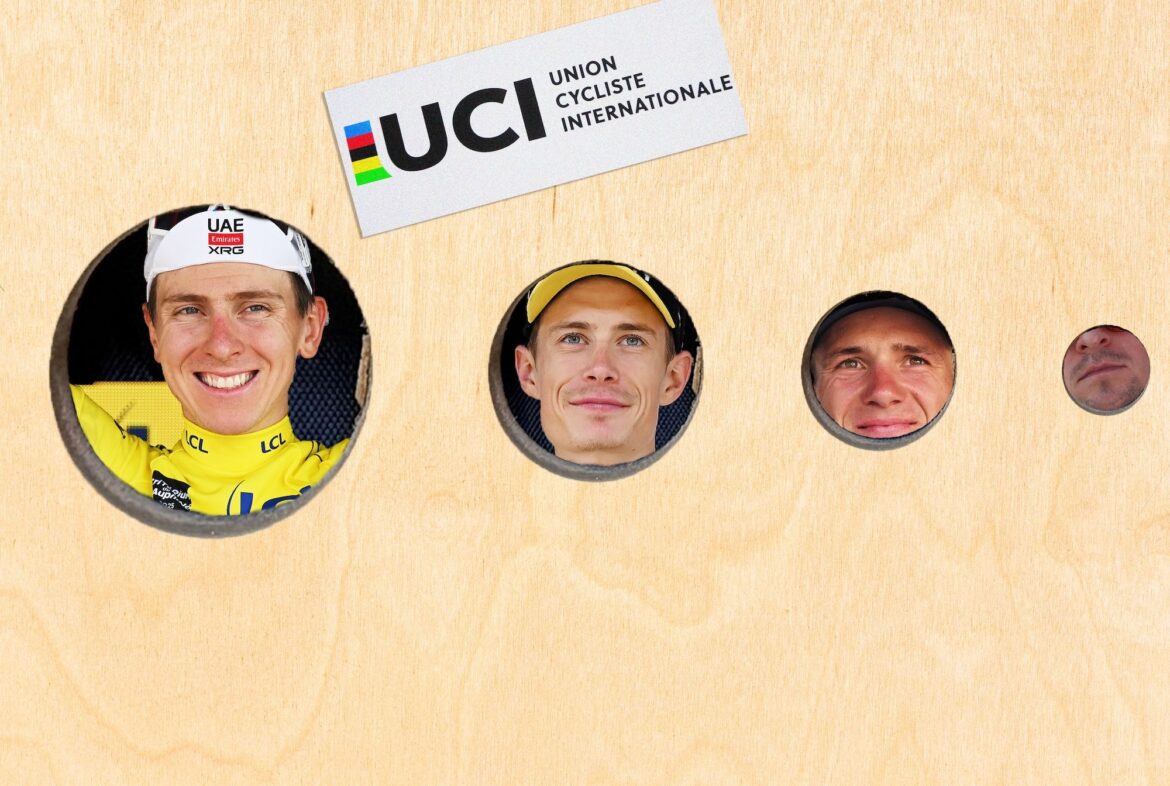If you preferred the way cycling looked about five years ago, great news. The Union Cycliste Internationale has your back. They have announced some forthcoming rule changes that are designed to take us all back in time just a little. As the world’s foremost slightly-sarcastic appraiser of UCI rule initiatives, naturally it falls to me to run the measuring tape over the un-innovations. (Unnovations?)
The new rules have a simple purpose. They are designed to make road bikes and riders a bit less aerodynamic, and hence a little more old-fashioned.
“It will mean the invention of a UCI shoulder-width measuring device”
Dr Hutch
The problem, and it’s not a small one, is that most women were riding narrower bars for years before most male riders made the change, and that was because “standard” 40cm bars weren’t just a bit sub-optimal, they were obviously way too wide to use comfortably. No one seems to have thought about this. There are smaller male riders in a similar position.
So what will undoubtedly happen is that the UCI will back down, to a rule that varies minimum bar width by relating it to rider size. Essentially they’ll have to measure the shoulders of the rider and specify a consequent width of bar. It will mean the invention of a UCI shoulder-width measuring device.
I have a better suggestion, though. If your Instagram has as many cat videos as mine, you’ll be familiar with a format consisting of a big bit of cardboard with a variety of different size holes cut out of it, and a cat who is encouraged (with food) to jump through one of the holes.
Then the holes are progressively closed off from largest to smallest to see what the smallest one the cat will fit through is. I want the same thing with bike riders. At signing on, there will be a big bit of plywood with holes in it. The smaller a hole you can fit through, the narrower your bars can be. People are looking for a way to liven up bike race coverage. I’ll just say, you’re all welcome.
how to….. pace yourself
What we mean by “pacing” depends on the event. For a 4,000m pursuit, it’s a very delicate sliding scale between “much too hard” and “much, much too hard”. Pacing a 4,000m pursuit is very similar to pacing your use of a fire extinguisher as your house burns around you.
For a time trial, it’s about something that is sustainable, but only just. You may like to use the old metric of “Can I sustain this till the end? Yes? Well, then I need to go a bit harder, don’t I?”.
For anything else, and especially anything longer, the secret to pacing yourself is just to slow down. Whatever you’re doing, you can almost certainly make it a more pleasant experience by doing it less hard. Most of us know that geometric nature of the velocity/drag equation means that going 10% faster needs 30% more work. What no one remembers is that if this also means that if you try a third less hard, you only go 10% slower. And outside a few very specific race scenarios, that’s a much better way to arrive.
If you simply have to hurry on a long ride, to be honest the secret is still to start slowly. If you just keep doing the same speed it will get hard quite soon enough. If you’re lucky, by the time it does you’ll have come to your senses and reverted to the previous suggestion and slowed the hell down.
Dear doc
An old team-mate recently reminded me of a junior event in the 1990s, involving a very popular 10-mile time trial course in Yorkshire. There was a very long, protracted argument about whether the course was short, and if times set on it should be allowed to stand.
Eventually someone arranged to have the course re-measured. To everyone’s horror it was 100 yards short of being 10-miles long. The mystery of how this happened was eventually resolved. The course description said the finish was beside lamp post 41449 (or something). And that is where the finish was. The problem was that a year or two earlier, in the dark of night and dead of winter, the council had moved the lamp post.
